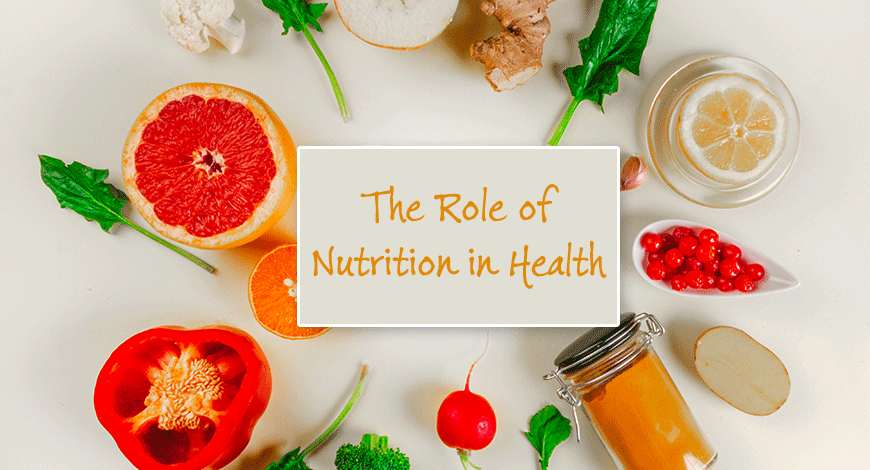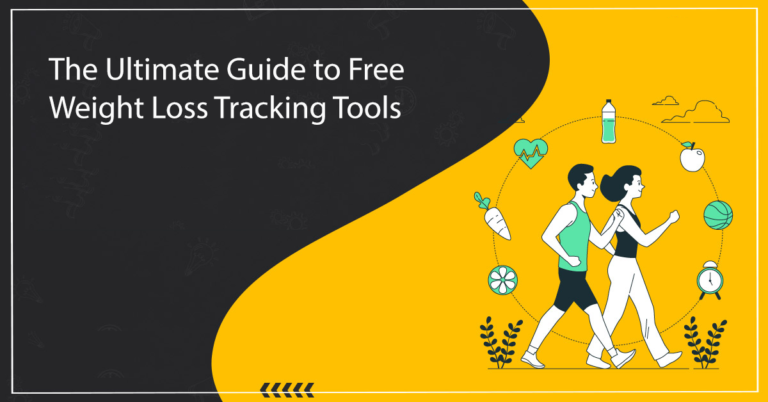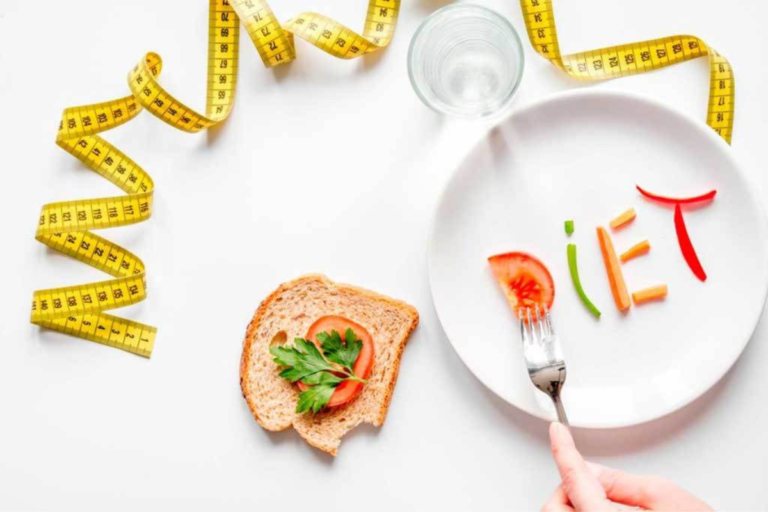Part 1: Introduction
A healthy diet is more than just the food we eat; it is a foundation for overall well-being. Defined as a balanced intake of essential nutrients that supports growth, energy, and repair, a healthy diet is crucial for maintaining a high quality of life. But why does science place such emphasis on nutrition? Research shows a direct correlation between what we consume and our physical and mental health, highlighting the role of proper nutrition in preventing chronic diseases and enhancing longevity.
Part 2: Essential Nutrients
Our bodies require a variety of essential nutrients to function optimally:
- Proteins help build and repair tissues.
- Carbohydrates provide energy.
- Fats support cell structure and hormone production.
- Vitamins and minerals regulate body processes and strengthen the immune system.
- Fiber aids digestion and supports gut health.
Foods such as lean meats, whole grains, fruits, vegetables, nuts, and seeds are rich sources of these nutrients. Incorporating a variety of these foods ensures the body receives everything it needs for proper functioning.
Part 3: How Food Impacts the Body
Food undergoes a complex journey in our bodies, from digestion to absorption. In the digestive system, food is broken down into smaller components—like glucose from carbohydrates or amino acids from proteins—that the body can absorb and use.
Different organs are directly influenced by dietary habits:
- Heart: A balanced diet reduces the risk of cardiovascular disease.
- Brain: Nutrients like omega-3 fatty acids and antioxidants improve cognitive function.
- Digestive System: Fiber-rich foods promote a healthy gut.
- Immune System: Proper nutrition strengthens the body’s defense against infections.
The food we consume has a profound effect on our bodies, influencing everything from physical energy and cognitive performance to mood and long-term health. Understanding how different nutrients interact with our systems is crucial for making informed dietary choices. Below are some key ways food impacts the body:
1. Energy and Metabolism
- Carbohydrates are the body’s primary source of energy. Simple carbs, like sugar, provide quick bursts of energy, while complex carbs, like whole grains, release energy gradually, helping to maintain stable blood sugar levels.
- Proteins are essential for building and repairing tissues, as well as supporting immune function. They also play a role in the production of enzymes and hormones.
- Fats provide a concentrated source of energy and are vital for brain health, hormone production, and the absorption of fat-soluble vitamins (A, D, E, K).
2. Digestive Health
- Fiber-rich foods, such as fruits, vegetables, whole grains, and legumes, promote a healthy digestive system by supporting regular bowel movements and feeding beneficial gut bacteria.
- Foods rich in probiotics (like yogurt and fermented foods) can enhance gut health by introducing beneficial bacteria, which can boost immunity and improve nutrient absorption.
- Highly processed foods can disrupt the gut microbiome, leading to digestive discomfort and long-term health issues.
3. Cognitive Function and Mood
- Omega-3 fatty acids, found in foods like fatty fish, walnuts, and flaxseeds, support brain health and cognitive function. They are also linked to reducing symptoms of depression and anxiety.
- Foods rich in antioxidants (such as berries, nuts, and dark leafy greens) combat oxidative stress, protecting brain cells and reducing the risk of cognitive decline.
- High sugar and refined carb intake can lead to mood swings and fatigue due to rapid spikes and crashes in blood sugar levels.
4. Hormonal Balance
- Healthy fats, such as those found in avocados, nuts, seeds, and olive oil, are essential for hormone production and balance.
- Eating a variety of fruits and vegetables provides phytonutrients that support the endocrine system.
- Excessive sugar and processed food consumption can lead to insulin resistance, impacting hormones related to appetite and metabolism.
5. Muscle and Bone Health
- Protein is key for muscle growth and repair. Lean meats, fish, beans, and legumes are excellent sources.
- Calcium-rich foods like dairy, leafy greens, and fortified plant milks are essential for bone health, along with vitamin D, which helps the body absorb calcium.
- Magnesium and potassium, found in foods like bananas, nuts, seeds, and whole grains, are important for muscle function and preventing cramps.
6. Immune Function
- Vitamin C (found in citrus fruits, peppers, and strawberries) is well-known for its role in supporting the immune system.
- Zinc, found in foods like meat, shellfish, seeds, and nuts, is crucial for immune cell function and wound healing.
- A diet rich in diverse, colorful fruits and vegetables provides antioxidants and phytonutrients that bolster the immune system.
7. Weight Management
- Consuming nutrient-dense foods like vegetables, lean proteins, whole grains, and healthy fats helps regulate appetite and maintain a healthy weight.
- Processed foods high in sugar, salt, and unhealthy fats can lead to overeating due to their addictive nature and low nutrient density.
- Foods high in protein and fiber increase satiety, reducing overall calorie intake and supporting weight management efforts.
8. Heart Health
- Omega-3 fatty acids and monounsaturated fats (from fish, nuts, seeds, and olive oil) are heart-friendly and help reduce inflammation.
- Soluble fiber, found in oats, beans, and certain fruits, can lower LDL (bad) cholesterol levels.
- Diets high in processed foods, trans fats, and added sugars can increase the risk of heart disease by raising cholesterol and blood pressure levels.
9. Long-term Health and Disease Prevention
- A diet rich in whole foods—such as fruits, vegetables, lean proteins, whole grains, and healthy fats—has been linked to a lower risk of chronic diseases like diabetes, heart disease, and certain cancers.
- Antioxidants, vitamins, and minerals found in whole foods play a protective role in maintaining cellular health and reducing inflammation.
- Limiting processed foods, red meats, and sugary drinks can decrease the risk of obesity, type 2 diabetes, and metabolic syndrome.
10. Hydration and Body Function
- Water is essential for almost every bodily function, including digestion, nutrient transport, temperature regulation, and joint lubrication.
- Proper hydration supports cognitive function, energy levels, and physical performance.
- Foods with high water content, like cucumbers, melons, and citrus fruits, contribute to daily hydration needs.
The foods we eat provide more than just calories—they offer a complex array of nutrients that shape our health and well-being. By choosing a balanced, nutrient-rich diet, we can positively influence our energy levels, mental clarity, emotional well-being, and long-term health outcomes. Mindful eating, focusing on whole foods and minimizing processed ingredients, can lead to profound changes in the body, enhancing overall quality of life.
Part 4: The Science Behind Popular Diets

Several dietary patterns have gained attention for their scientific backing:
- The Mediterranean Diet, rich in olive oil, fish, fruits, and vegetables, is celebrated for its cardiovascular benefits.
- The DASH Diet (Dietary Approaches to Stop Hypertension) effectively lowers blood pressure by emphasizing low-sodium, nutrient-rich foods.
- The Ketogenic Diet promotes weight loss by reducing carbohydrate intake and encouraging fat as the primary energy source, though long-term effects warrant careful consideration.
- Vegetarian Diets focus on plant-based foods, offering benefits like reduced risk of chronic diseases, but may require supplementation for nutrients like B12.
In recent years, several dietary patterns have gained popularity for their evidence-based benefits. Understanding the science behind these diets can help individuals make informed decisions that align with their health goals and lifestyles.
The Mediterranean Diet
The Mediterranean diet is inspired by the traditional eating habits of countries bordering the Mediterranean Sea, such as Greece and Italy.
- Key Features: Emphasis on whole foods like fruits, vegetables, whole grains, nuts, seeds, olive oil, and moderate consumption of fish, dairy, and red wine.
- Scientific Backing: This diet is rich in healthy fats, particularly monounsaturated fats from olive oil and omega-3 fatty acids from fish, which are linked to reduced inflammation and improved heart health. Studies show it lowers the risk of cardiovascular diseases, type 2 diabetes, and certain cancers.
The DASH Diet
DASH (Dietary Approaches to Stop Hypertension) is designed to combat high blood pressure and promote heart health.
- Key Features: Low sodium intake, an abundance of fruits, vegetables, whole grains, lean proteins, and low-fat dairy products.
- Scientific Backing: The DASH diet reduces sodium to control blood pressure and emphasizes potassium, calcium, and magnesium to support heart function. Clinical trials confirm its effectiveness in reducing hypertension and improving cholesterol levels.
The Ketogenic (Keto) Diet
The ketogenic diet involves a high-fat, moderate-protein, and low-carbohydrate approach, encouraging the body to enter a state of ketosis, where fat is burned for energy instead of glucose.
- Key Features: Foods high in fats (avocado, nuts, butter) and low in carbs (leafy greens, non-starchy vegetables).
- Scientific Backing: Studies highlight its short-term benefits in weight loss and blood sugar control. However, long-term adherence can be challenging, and there are concerns about its impact on heart health and nutrient deficiencies. Individuals should seek medical guidance before starting this diet.
Vegetarian and Vegan Diets
Plant-based diets focus on eliminating or reducing animal products, with vegan diets excluding all animal-derived items.
- Key Features: Rich in fruits, vegetables, legumes, nuts, seeds, and whole grains.
- Scientific Backing: Plant-based diets are associated with a lower risk of chronic diseases, including heart disease, obesity, and type 2 diabetes. They are high in fiber and antioxidants, which promote gut health and reduce inflammation. However, careful planning is needed to ensure adequate intake of nutrients like vitamin B12, iron, and omega-3 fatty acids.
Intermittent Fasting (IF)
Intermittent fasting is a time-restricted eating pattern that alternates between periods of fasting and eating.
- Key Features: Popular approaches include the 16/8 method (16 hours fasting, 8 hours eating) or alternate-day fasting.
- Scientific Backing: Research suggests it may improve metabolic health, enhance fat loss, and promote cellular repair processes like autophagy. However, its suitability varies among individuals, and prolonged fasting may not be ideal for everyone.
Paleo Diet
The Paleo diet aims to mimic the eating habits of early humans, focusing on whole foods while excluding processed items and grains.
- Key Features: Includes meat, fish, eggs, vegetables, fruits, nuts, and seeds, but avoids grains, legumes, dairy, and refined sugar.
- Scientific Backing: Advocates claim benefits such as weight loss and reduced inflammation, but critics point out that its exclusion of certain food groups may lead to nutritional imbalances.
Part 5: Diet and Disease

The connection between diet and disease prevention is profound:
- Obesity: High-calorie, low-nutrient diets are major contributors. Balanced meals and portion control are key to prevention.
- Diabetes: Monitoring carbohydrate intake helps regulate blood sugar levels.
- Heart Disease: Diets low in saturated fats and high in fiber lower cholesterol and improve heart health.
- Chronic Illnesses: Antioxidant-rich foods may reduce the risk of cancers, while calcium and vitamin D are vital for bone health.
The relationship between diet and disease is well-documented, with nutrition playing a critical role in both the prevention and management of numerous health conditions. Below are some of the most significant connections:
Diet and Obesity
Obesity arises from a chronic imbalance between calorie intake and energy expenditure. Diets high in processed foods, sugar, and unhealthy fats are major contributors to this condition. Obesity, in turn, increases the risk of other diseases such as type 2 diabetes, heart disease, and certain cancers.
- Prevention: A balanced diet rich in whole foods, including fruits, vegetables, lean proteins, and whole grains, can help manage weight. Portion control and mindful eating also play a vital role in avoiding excessive calorie consumption.
Diet and Diabetes
Type 2 diabetes is strongly linked to dietary habits, particularly the overconsumption of refined sugars and simple carbohydrates, which cause spikes in blood sugar levels.
- Management: A low-glycemic diet focusing on complex carbohydrates, fiber-rich foods, and lean proteins can help stabilize blood sugar. Foods such as leafy greens, whole grains, nuts, and seeds are particularly beneficial.
- Prevention: Maintaining a healthy weight and avoiding sugary beverages can significantly reduce the risk of developing diabetes.
Diet and Cardiovascular Diseases
Heart disease remains a leading cause of death worldwide, with poor dietary choices being a significant risk factor. Diets high in saturated fats, trans fats, and sodium can lead to high cholesterol, high blood pressure, and arterial damage.
- Prevention and Management: Consuming heart-healthy foods like fatty fish (rich in omega-3s), nuts, seeds, whole grains, and olive oil can improve cardiovascular health. Limiting salt and avoiding processed foods are also crucial steps in reducing blood pressure and improving heart function.
Diet and Chronic Illnesses
- Cancer: Certain diets rich in antioxidants, such as those found in colorful fruits and vegetables, may help reduce the risk of cancers by combating oxidative stress and inflammation. Conversely, high consumption of processed meats and alcohol has been linked to an increased risk of colorectal and other cancers.
- Osteoporosis: A diet deficient in calcium and vitamin D can lead to weakened bones, increasing the risk of fractures and osteoporosis. Consuming dairy products, fortified plant-based milk, leafy greens, and spending time in the sun for vitamin D synthesis can help maintain bone health.
- Gut Health Disorders: Diets low in fiber can contribute to conditions like irritable bowel syndrome (IBS) and constipation. High-fiber foods, such as whole grains, fruits, and vegetables, support a healthy microbiome and improve digestive health.
Key Takeaways
Diet is a powerful tool for managing and preventing diseases. The foods we consume directly affect inflammation, hormonal balance, and cellular repair processes, all of which influence our risk of illness. By making thoughtful choices, individuals can significantly improve their health outcomes and enhance their quality of life.
Part 6: Planning and Maintaining a Healthy Diet
Creating a healthy diet involves three core principles:
- Variety: Include diverse food groups to ensure all nutrient needs are met.
- Balance: Pair macronutrients (proteins, fats, carbohydrates) appropriately.
- Moderation: Avoid overconsumption of any one food or nutrient.
To adopt healthier eating habits:
- Gradually replace processed foods with whole, nutrient-dense options.
- Learn to read food labels to make informed choices.
- Cook meals at home to control ingredients and portion sizes.
Part 7: Conclusion
In today’s fast-paced world, a healthy diet is an invaluable investment in one’s future. It not only prevents disease but also enhances physical and mental performance. While adopting a balanced diet can be challenging, the rewards are immense. For personalized advice, consider consulting a nutritionist who can tailor recommendations to individual needs.
A healthy diet is not just about achieving a physical goal; it is a lifestyle that integrates nutrition into every aspect of life. With increasing global awareness of the relationship between food and health, individuals and communities have the opportunity to create a culture of wellness.
Small steps, such as prioritizing nutrient-dense foods, avoiding excessive sugar and processed ingredients, and maintaining a regular meal schedule, can lead to significant improvements in health over time. Furthermore, sharing these practices with family and friends can encourage a collective shift towards healthier living.
In conclusion, the journey to a healthy diet starts with education and a commitment to change. By combining scientific knowledge with practical habits, we can transform our approach to food from mere sustenance to a vital tool for longevity and vitality. Let’s embrace the power of nutrition to build a healthier future for ourselves and generations to come.
By understanding the science behind healthy eating, we can empower ourselves to make choices that promote a longer, healthier, and happier life.

































